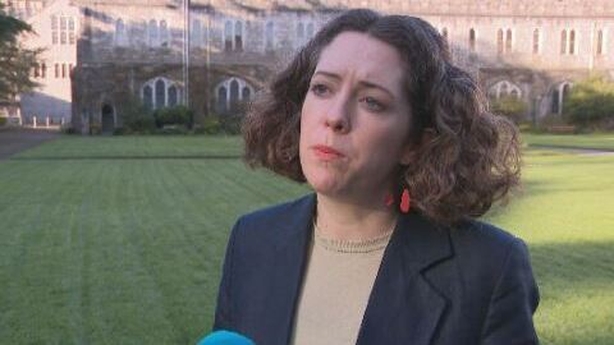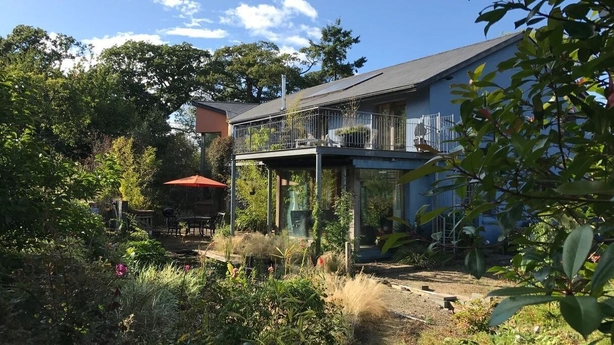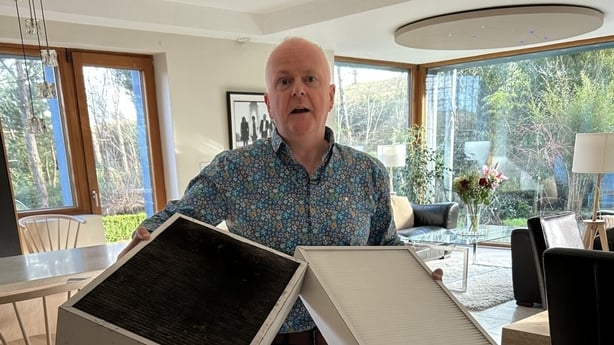Nearly 770,000 people lost power due to Storm Éowyn at the end of January, many for weeks. Some had to move out of their homes and find alternative accommodation.
What lessons does this teach us in terms of energy resilience, as people move away from solid and fossil fuels to more electric and renewable energy options?
Just over two years ago - in a bid to get to an 'A' energy rating - Martina and Nigel Clancy and their three children in Gurteen, Co Sligo, spent around €80,000 retrofitting their home.
A quarter of the cost of the comprehensive work was covered by SEAI grants.

"What we needed to do was first of all remove all our windows and doors to put tightness tape in," Mr Clancy said.
"After that, then you look at insulation, then we installed the heat pump and connected that into the under-floor heating system, which we already had," he added.
He said after a "couple of months" they then installed the solar panels.
"The entire retrofitting work was a long, expensive and complicated process," he said.
The Clancy family stopped using oil to heat their home and now rely entirely on electricity and renewables.
This meant that when Storm Éowyn struck and knocked out power to hundreds of thousands of properties, it had a huge impact.
We need your consent to load this rte-player contentWe use rte-player to manage extra content that can set cookies on your device and collect data about your activity. Please review their details and accept them to load the content.Manage Preferences
Ms Clancy said when the electricity was cut the family "had to move out of the house and into a hotel for 15 nights".
She said: "We have a daughter (Nova) with additional needs who has a very poor immune system, so she couldn't be exposed to the cold.
"The house got cold very, very quickly. Also, she's afraid of the dark. Nova has immune arthritis, so the medication she's on is refrigerated.
"It costs €1,100 a month. She is also on liothyronine and that has to be in a refrigerator all the time. So we lost all that medicine."
Experts said the storm exposed key vulnerabilities in the energy grid, as well as the model used to power households.
'Tragic irony'

Professor in Sustainable Energy at University College Cork Hannah Daly said the experience many people faced after the storm "shows just how reliant we are for every facet of our lives on electricity".
She said: "Now we don't know to what extent Storm Éowyn was supercharged by climate change but we know that this is the type of disruption that we'll face in a warming world, and it would be a tragic irony if the experience of the storm would cause people to rethink clean energy and to drive people away from electricity as a solution."
Prof Daly said "we have to build in resilience to those plans", adding that this could entail keeping a stove in the house.
"And that's not incompatible with a clean and decarbonised house, but we could also consider other alternatives, like home batteries or electric cars," she added.
The cost of retrofitting can be expensive, but there are various grants available from the Sustainable Energy Authority of Ireland.
However, another part of the solution to the energy resilience puzzle may be in how we construct our homes.
Tomás O'Leary, Managing Director of MosArt Architects, is the owner of the world's first certified passive house in Co Wicklow, which was built 20 years ago.

"We started this journey 20 years ago and I thought there'd be a queue out the door that people would just be so amazed with this, but it's very hard to change the construction culture," he said.
Explaining the passive house concept, he said: "It's a 35-year-old idea based on very simple principles and it's about doing the simple things really well.
"It's what we call the fabric first approach, put a proper jacket on the building, put a proper hat on it, wear a draft proof jacket, do the envelope really well."

Mr O'Leary said the other "key elements" of the concept are triple-glazing and a heat recovery ventilation system.
Although it has been slow to catch on, he said there has been "a dramatic spike in interest" in recent times, adding that the Land Development Agency has "just finished one of the largest schemes in Europe in Dún Laoghaire with 547 certified passive house units".
"What we're finding when it comes to apartments is that the extra (construction) cost is almost negligible and the energy savings and the comfort and the resiliency are vastly improved," he noted.
Mr O'Leary said the concept came into its own during Storm Éowyn and that his home lost power for four days, but the temperature in the house only fell by half a degree.
There is a consensus among experts that as we increasingly move towards more renewable energy options, innovation will be key.
However, in the interim fossil fuels will likely continue to play a role in terms of energy resilience - albeit an ever decreasing one.







